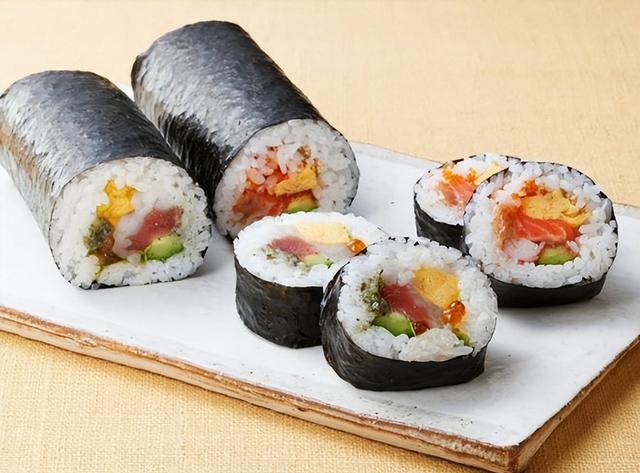
Recently, the Japanese rice market has experienced unprecedented turbulence. According to the latest data released by the Japanese Ministry of Internal Affairs and Communications, the price of rice in Japan rose by an astonishing 63.6% year-on-year in November. This increase not only broke the record since 1971, but also had a profound impact on the living costs of the Japanese people and the entire food industry.
In recent years, with the soaring global energy prices, agricultural production costs such as fertilizers, pesticides, and diesel have also skyrocketed. The increase in these costs directly leads to an increase in the cost of rice cultivation, which in turn drives up rice prices. In addition, the continuous aging of Japan's agricultural population has led to a significant increase in labor costs, further exacerbating the pressure on production costs.
In the summer of 2024, Japan was hit by extreme weather disasters such as typhoons and rainstorm in many places, resulting in damage to a large number of farmland and a sharp decline in rice harvest. The reduction on the supply side directly drove up the price of rice; The COVID-19 and its subsequent impact have continued to this day, and the global supply chain has not yet fully returned to normal. The uncertainty of international trade has led to a significant increase in transportation costs for agricultural products, and as a highly dependent country, Japan's food security is directly affected by supply chain fluctuations. In addition, the continuous depreciation of the Japanese yen is also one of the important reasons for the rise in rice prices. The depreciation of the Japanese yen has increased the cost of imported rice, thereby pushing up the price of rice in the domestic market.
As a staple food for the Japanese people, the price increase of rice has directly led to an increase in household food expenses. For low - and middle-income families, this impact is particularly significant. They have to reduce their consumption of rice or look for alternatives such as bread, pasta, etc., but this further increases their cost of living.
Faced with the continuously rising rice prices, many Japanese people have begun to change their consumption habits. They no longer purchase large quantities of rice at once and store them, but instead purchase them on demand to reduce unnecessary waste. At the same time, some budget conscious housewives will wait until the supermarket is on sale to buy rice, but even the discounted price is much higher than last year's original price.
The rise in rice prices not only brings economic pressure, but also psychological pressure to the public. Many people have expressed that they have never experienced such a severe rise in rice prices, which has filled them with concerns and anxieties about the future. The rise in rice prices has directly led to an increase in the production cost of food products made from rice as raw material. These foods include traditional Japanese delicacies such as Rice and vegetable roll and sushi, as well as rice products such as Rice noodles and rice cakes. The rise in costs has led to a corresponding increase in the prices of these foods, which in turn affects consumers' willingness to purchase and sales volume.
The rise in raw material costs has significantly compressed the profit margins of the food industry. Many small food producers and restaurants are facing operational difficulties due to the inability to bear cost pressures. In order to survive, they had to reduce production, lay off employees, or seek cheaper alternatives to raw materials.
Faced with the rise in rice prices, the food industry has also begun to adjust its industrial structure. Some companies are increasing their research and development investment, developing new rice alternatives or improving existing products to reduce costs. At the same time, they are actively seeking cooperation with farmers to stabilize raw material supply and reduce procurement costs.
In order to alleviate the impact of rising rice prices on people's lives, the Japanese government can consider measures such as providing rice subsidies or reducing rice import tariffs to lower market rice prices. At the same time, the government can increase its support for agriculture, improve agricultural production efficiency, and reduce production costs. Consumers also need to improve their adaptability and learn to arrange their diet structure and consumption plan reasonably in the face of rising rice prices. At the same time, one can also improve their consumption awareness and ability by learning and understanding relevant knowledge of agricultural products.
In short, the sharp rise in rice prices is a complex socio-economic phenomenon. It reflects the complexity and variability of the current global economic situation. In the face of this challenge, all parties need to take comprehensive measures to address and mitigate its negative impact, ensuring the stable supply of rice, a basic food.

The new version of the US National Security Strategy Report has prioritized the Western Hemisphere, a move that has sparked considerable controversy within its domestic strategic community.
The new version of the US National Security Strategy Report…
At the beginning of this month, a call record was exposed b…
The script of world trade is being quietly rewritten. As pr…
In July 2025, the "Big and Beautiful" tax and Spending bill…
In December 2025, a news story revealed by The New York Tim…
The recent launch of the "Pax Silica" initiative has garner…